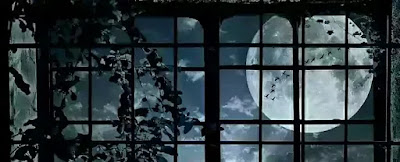Also Read
Tree At My Window
Tree at my window, window tree,
My sash is lowered when night comes on;
But let there never be curtain drawn
Between you and me.
Vague dream head lifted out of the ground,
And thing next most diffuse to cloud,
Not all your light tongues talking aloud
Could be profound.
But tree, I have seen you taken and tossed,
And if you have seen me when I slept,
You have seen me when I was taken and swept
And all but lost.
That day she put our heads together,
Fate had her imagination about her,
Your head so much concerned with outer,
Mine with inner, weather.
Summary & Analysis
Introduction:
Tree At My Window by Robert Frost is one of the well-known nature poems in the collection entitled West Running Brook, which was published in 1928. Frost is a great nature-poet but he is a nature-poet in his own right. He is no follower of Wordsworth or other glow-worms in the romantic school. On the contrary, he is quite opposed to the Wordsworthian way of thinking about nature. Usually, Frost tries to depict that nature is essentially alien and has no mystic kinship with man. But here in this poem Frost tries to blend sympathetically the human head and tree head, the inner and outer weather so that man and nature close in understanding, so as to fit together like the two hemispheres.
Summary:
Just next to the window of the poet's bedroom is a tree. At night the poet closes the window to shut out the cold. But the poet avoids drawing the curtain because he wants to have the tree constantly within the range of his vision. The poet is fascinated by the tree - he seems to have discovered bounds of affinity between himself and the tree. He sees the tree come under violent spells of movement because of the strong winds. This he feels is just parallel to his being torn by conflicts and being tossed on the horns of worries and dilemmas. In this respect, their lot is similar. But this far and no further. At this point their analogy ends. From this point onwards the poet becomes increasingly aware of their differences-between the tree and himself and between the world of nature and that of man at large. The tree can experience only outer weather, storms, strong wind, etc. It is completely insensate to any non-vegetable phenomenon, lacks emotions, intellect, etc. It does not and cannot know "inner weather" - spiritual upheaval, the agony of the soul, the plague and torment of the thinking and questioning mind.
One can discover romantic elements scattered throughout the poem. A striking instance is the second stanza where he refers to the tree as a vague dream-head lifted out of the ground" and says that it is a "thing next most diffuse to cloud." The passage is an example of rare suggestivity and a hazy quality in the line of highest kind of romantic art. But it is only the language that has been moulded on the pattern of the romantic poetry. The thought content, the poet's attitude to nature, is almost contrary to that of romantic poetry. The Romantics stressed the points of similarity between man and nature. Frost asserts the essential differences between both the worlds. He fakes cognizance of these points of superficial similarity but points out and reiterates that beneath these similarities, there are essential differences between man and nature. Nature exists because man is there to perceive it. In itself, "It is insensitive, unfeeling and dull; to feel and to suffer spiritually is a peculiarly human prerogative. In this way, Frost asserts the superiority of man over nature, of mind over matter".
Critical Analysis:
This is one of those few poems in which Frost addresses the objects of nature-talks directly to them. Again differentiating him from Wordsworth and pointing out the contrast between the two, Marion Montgomery says: "What is high seriousness to Wordsworth is fancy or humour in Frost". We should never suppose "that Frost feels the kind of brotherhood for natural objects that Wordsworth expresses through much of his poetry" Always, to Frost, man differs from other creatures and objects. His trees, though he speaks to them, do not take on grave countenances. The weather that buffets them is "outer" and bears them to the withered bracken. They, no doubt, trail their leaves before them, like girls drying their hair in the sun. But this is motion of natural objects and not emotion, human smile but not human feeling. He may attribute human actions to objects of nature, but he never attributes human emotions to them. He may ascribe human behaviour to them but he never ascribes human mind to them.
Conclusion:
Whenever Frost speaks to nature or of nature, we feel that he always has man in his mind - that he is looking at man from the corner of his eye and ultimately talking to man. Even in these poems, it seems that Frost describes the animal and vegetable nature in man and not attributing human nature to the animal and vegetable worlds, like the Romantics. Frost gives utmost importance to man. He reiterates untiringly that though a speck in the universe, man is an individual entity in himself, and a lonely, isolated alien in this vast universe.
